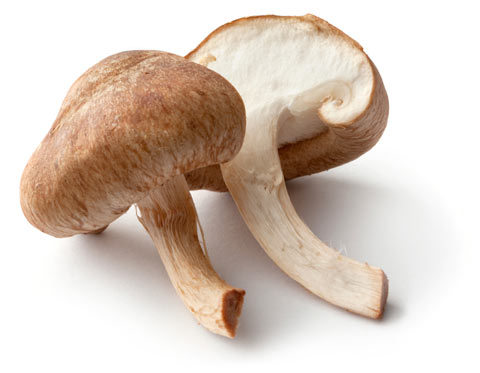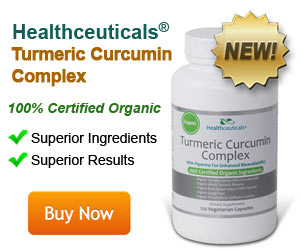Health Benefits of Asian Mushrooms

Fun Facts:
Mushrooms have the 5th taste, called umami — a savory flavor — due to their high glutamic acid content. This relatively recently discovered taste is created when glutamate becomes L-glutamate with cooking or fermentation. Humans have taste receptors for umami just like we do for sweet, sour, salty, and bitter tastes. (i.1, 4, 14)
Neither fruit nor vegetable, mushrooms are actually a fungus, often growing on decaying wood. White button mushrooms are the most popular in the United States, Asian varieties such as shiitake and maitake are usually larger and feature a more distinct taste. Because they can be prepared in many ways, mushrooms are easy to incorporate into your diet. (i.1, 2, 4, 14)
Cancer-Fighting and Other Health Benefits
Besides being tasty, mushrooms may help the body fight cancer and auto-immune diseases such as lupus and rheumatoid arthritis. Researchers in Japan, where mushrooms are a dietary staple, have found that mushrooms have a high glutamic acid content, which helps boost the immune system and fight infections. (i.4)
Mushrooms contain other immune-boosting and antioxidant cancer-fighting nutrients as well, such as:
- B vitamins — thiamine (vitamin B1), riboflavin (vitamin B2), niacin (vitamin B3), pantothenic acid (vitamin B5), and vitamin B6. (i.2)
- Selenium — an antioxidant that has been linked to reducing skin and cell damage from free-radicals. (i.2)
- Copper — required to make one of the body's own essential antioxidants (superoxide dismutase). (i.2)
- Vitamin D — especially after exposure to UV light (such as sunlight) when white button mushrooms contain almost 900 times the RDA of this potent nutrient. (i.1)
Mushrooms also contain high levels of L-ergothioneine, an antioxidant amino acid that does not break down in the cooking process. L-ergothioneine protects the liver from free-radical damage and inhibits cataract development. In addition to its own antioxidant properties, L-ergothioneine also stimulates superoxide dismutase activity, lack of which has been linked to cancer. Maitake and shiitake mushrooms are among the mushroom varieties that contain the highest concentration of L-ergothioneine. Shiitake mushrooms contain three times more L-ergothioneine than portobello mushrooms. (i.2, 5)
At the University of Dhaka, mushrooms were shown to lower high blood pressure and cholesterol in animals with hypertension. In another study, a component of mushrooms were shown to destroy cancer cells in patients with gastric cancer. This study demonstrated that a starchy material in mushrooms known as lentinan helped to activate cancer fighting properties of the immune system's white blood cells and T cells. (i.4, 5)
People all over the world have revered the medicinal powers of the innocuous mushroom — long before the advent of modern science began to unravel the exact mechanisms and beneficial components in fungi. Some interesting stories from mushroom's medicinal history include:
- In China, mushrooms are the symbol for the god of longevity, and mythology from Babylonian, Finnish, Indian, Germanic, Mediterranean, and Persian traditions all mention the health-restorative and immortalizing powers of fungi. (i.4, 15)
- The ancient Egyptians thought eating mushrooms would make a person live forever. (i.1)
- In traditional folk medicine from Europe, the pink-bottomed member of the same mushroom family as Portobello, crimini, and white button mushrooms was stewed in milk to relieve throat cancer. (i.15-16)
- Mushrooms are used in Japanese folk medicine to treat cancer. (i.4)
Mushrooms can be eaten in salads, soups or sauces, as an entrée, or sautéed and served as a side-dish. Most stores will carry shiitake mushrooms, but locating maitake or reishi may require a trip to an Asian market. Choose firm mushrooms, and gently wipe or rinse with cold water before cooking. You can store mushrooms loosely covered (a paper bag works great) in your refrigerator for up to 10 days. (i.1, 2)
Growing Mushrooms at Home
Can you grow these tasty antioxidant-packed fungi at home? According to those who have tried mushroom kits, the answer is a resounding yes. The kits make it easy to try your hand at growing and harvesting even some of the exotic types (such as Shiitake and oyster mushrooms). Better yet, you can find these kits at some online retailers that are certified organic. (i.17)
If you want to learn more about growing mushrooms, plan a weekend get-away to Kennett Square, Pennsylvania. Every year the self-proclaimed mushroom capital of the world holds a Mushroom Festival in September, which is National Mushroom Month. The festival features over 200 vendors dedicated to the mushroom, with everything from culinary contests and classes and farm tours where you can learn how to grow mushrooms to mushroom art, furniture and even mushroom ice-cream. Pennsylvania produces a sizable proportion of the mushroom crop in the United States, in large part due to two Kennett Square nurserymen who began growing mushrooms in their greenhouses in the late 1800s. The festival celebrates Pennsylvania's contribution to the mushroom industry and gives thousands of dollars a year to local and national charities — including for breast cancer research. (i.18)



